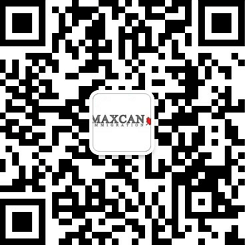

Pakistani Student Study in Canada SDS
Posted on 31/07/2019
Canada’s Student Direct Stream, which provides faster processing for international students who wish to study at a Designated Learning Institution (DLI) in Canada and who are legal residents of:
- China,
- India,
- The Philippines, and
- Vietnam.
has now expanded to include legal residents of Pakistan.
This program aims to support the growing diversity in all walks of life in Canada by ensuring a healthy representation of international post-secondary students either from or living in these countries.
So, if you are a legal resident of Pakistan (whether you are a citizen of the country or not) you now have available an application process to study at the post-secondary level in Canada that takes only around 3 weeks. This is great news!
As always, however, there’s a catch.
Eligibility for SDS
The requirements for the Student Direct Stream are more stringent than those for the normal application process for international students. They include 5 upfront documents that you must provide at the start of the process:
- Proof of a valid language test: the test results must be from within 2 years of the date the application for SDS is received. They should be:
- IELTS test with a score of 6 in all four skills: listening, reading, writing, and speaking.
- TEF score equivalent to Canadian Language Benchmark (CLB) scores of 7 in all four skills. The TEF equivalents are: 310 or higher for speaking; 249 or higher for listening; 207 or higher for reading; and 310 or higher for writing.
- Proof of a GIC (Guaranteed Investment Certificate) of CAD$ 10,000 or more in any bank insured by the Canadian Deposit Insurance Corporation (CDIC). This includes Canada’s domestic banks as well as foreign banks with branches and/or subsidiaries in Canada.
- This money is NOT for tuition. It is for your living expenses as a student.
- The money will be held in an investment account and only be released upon your arrival in Canada and confirmation of your identity by the bank where you have deposited the CAD$10,000.
- You will then receive an initial disbursement after which you will receive monthly or bi-monthly disbursements over a period of 10 to 12 months.
- Proof of full payment of Tuition for your first year of study. This can include:
- A receipt from your Designated Learning Institution (DLI)
- An official letter from your DLI confirming payment
- A receipt from your bank showing payment of tuition fees to your DLI
- Proof payment has been sent to what is called a repository account at the DLI, to be applied to your tuition at a later date.
- A Letter of Acceptance from your DLI
- Proof of completion of an upfront Medical Examination if you have travelled through or lived in for 6 months or more a designated country. Go here for more information.
These are the 5 upfront documents you require to be eligible for Student Direct Stream. As is to be expected you will also have to submit the following documentation when you apply online.
- Form IMM 1294: Application for Study Permit Made Outside Canada form
- Form IMM 5645: Family Information form
- Form IMM 5257: Schedule 1 – Application for a Temporary Resident Visa form
- Form IMM 5409: Statutory Declaration of Common-Law Union form
- Please note that this is only if you are in a common law relationship and you do not have a Marriage License or Marriage Certificate, both of which are acceptable as proof of marriage.
- Obviously, this requirement (whether a license/certificate or form IMM 5409) only applies to married applicants or those in a common-law relationship.
- Form IMM 5476: Use of a Representative form.
- Only submit this if you are using a representative.
- Application processing fee payment
- Biometric processing fee payment – if applicable. In most cases you will have to submit biometrics.
- Once you have submitted your application and paid your biometrics fee, you will then receive a Biometrics Instruction Letter (BLI) detailing where to go to submit biometrics (essentially, digital fingerprints and facial photograph).
- Proof of identity.
- Photocopy of the information and biodata page of your passport.
In addition, you may be required to provide additional documentation like police certificates if, for example, they are a requirement of the region you are applying from. All documents must be translated into English and/or French. If they are not, they will not be accepted. Some medical conditions may require further tests or result in your inadmissibility.
Please note that if you have family members (like a spouse for example) who also wish to apply under SDS (Student Direct Stream) they should do so at the same time as the principal applicant in order to be processed concurrently.
As well, all temporary permits (work permit, study permit, or temporary resident visa) for family members should be submitted at the same time and online, so they can be processed together.
Do NOT submit separate applications on paper for family members. This will result in their not being able to accompany you and having to wait longer for their applications to be processed.
Finally, if you are an international student currently studying in Canada under a Prerequisite or Bridging Program of studies (where you upgrade your qualifications in order to be academically eligible for the main course of study you will then take in Canada) then you also may be eligible for the Student Direct Stream. However, you will have to apply from overseas from your country of residence.
After you Graduate
Congratulations! You may be eligible for the Student Direct Stream which will allow rapid processing of your application to study in Canada. However, that is just the first step of a process that could lead to permanent resident status. Here’s how to use your studies in Canada as a way to gain PR status.
Once you finish your course of study in Canada at your DLI, you then apply to the Post-Graduate Work Permit Program (PGWPP) where you can obtain an open work permit and accumulate Canadian work experience.
- The open work permit allows you to:
- Work full-time
- Work part-time
- Or even be self-employed (which will not be considered qualified Canadian work experience for EE application)
- The length of the open work permit is normally from 8 months up to 3 years and will depend on your course of study.
- If your program of study is exclusively by distance learning (online) then you are not eligible for an open work permit.
- If more than 50% of your program of study is online, you are not eligible for an open work permit.
- If less than 50% of your program of study is online, you may be eligible for an open work permit.
- If your course of study has an overseas component you are still eligible for an open work permit as long as the degree/diploma/certificate is granted by a Canadian DLI. The length of your open work permit will be based on the amount of time studying in Canada only.
- You should apply for an open work permit within 180 days of receiving official, written confirmation of your meeting the requirements of your program of study.
With your open work permit you then gain that vital Canadian work experience (generally from 8 months to up to 3 years) which you can then combine with your Canadian degree/diploma/certificate and apply for permanent residence through one of the following:
- Express Entry: the online portal where you upload your profile and get ranked.
- Provincial Nominee Programs: these can work independently or in conjunction with Express Entry and are a great way to obtain a PR visa if you qualify of course.
- The Atlantic Immigration Pilot: this is similar to other PNPs and represents the Atlantic provinces search for qualified immigrants to help grow their economies.
So, remember that SDS is not just a great way to get fast-track processing for your study permit, it’s also the first step on your way to permanent resident status in Canada!
Posted in News and tagged Student Visa, Study Permit




